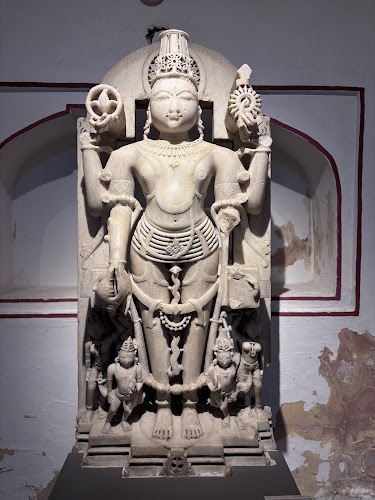
Akbar's Palace and Museum
Ajmer, India
- Admire miniature paintings and sculptures.
- Explore Mughal and Rajput armory collection.
- Learn about Mughal-Rajput history.
- Photograph the architecture and artifacts.
Known for:
Description:
Akbar's Palace and Museum, located in Ajmer, Rajasthan, offers a fascinating glimpse into the Mughal era. Originally built by Emperor Akbar in 1570, it served as his royal residence and a strategic base during his campaigns in Rajasthan. Today, it houses a museum showcasing a rich collection of Mughal and Rajput armory, sculptures, miniature paintings, and other artifacts. The architecture of the palace is a blend of Mughal and Rajput styles, featuring intricate carvings and spacious courtyards. Visitors can explore the various galleries, learn about the history of the region, and admire the artistic heritage of the bygone era. The museum provides valuable insights into the cultural and political landscape of medieval India, making it a must-visit destination for history enthusiasts and art lovers.
History:
Emperor Akbar commissioned the construction of this palace in 1570 as a strategic stronghold and a royal residence during his campaigns in Rajasthan. Ajmer held significant importance due to its proximity to the pilgrimage site of the Ajmer Sharif Dargah. The palace served as a base for Akbar's military expeditions and political negotiations with the Rajput rulers. It was also the location where Sir Thomas Roe, the ambassador of King James I of England, met with Emperor Jahangir in 1616, marking a crucial moment in Anglo-Mughal relations. Over time, the palace was converted into a museum to preserve and showcase the region's rich historical and cultural heritage, allowing visitors to delve into the Mughal and Rajput eras.